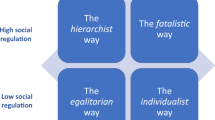Abstract
In this chapter, we call attention to study programme planning and realization where we consider well- known concepts of consistency to represent layers of reasoning to be connected with study programme planning and realization. Studies have emphasised how complex the notion of quality in education is, often referring to the multi-dimensional feature in educational programs. This multi-dimensional feature comprises a range of interrelated issues which must be considered simultaneously by several stakeholders. Still, investigations of consistency in higher education are mainly addressing these issues through rather segregated concepts of consistency in education. We investigate how the concepts of alignment, congruence and coherence can provide an illustrative basis for reflecting on and guiding hands-on study programme planning. To explore these issues, we ask what significance consistency holds in study program planning and realization and how can this be illustrated empirically through contrasting study program planning intentions and student experiences. The study draws on an in-depth analysis of interview data with program coordinators, teachers and students from two study programme cases of law and organization & management. By addressing the issues of consistency empirically, we identify informative gaps between intentions for teaching and learning, and students´ experiences. We then discuss the issues that are related to consistency in study programme planning. The material indicates that the analytical approach of the consistency concepts alignment, coherence and congruence lack a fourth layer of local institutional consistency, i.e., aspects that influence how consistency is understood and worked with at different institutions and in various study programmes, depending on certain unique institutional traits and the local surroundings of the higher education institution.
Access this chapter
Tax calculation will be finalised at checkout
Purchases are for personal use only
Similar content being viewed by others
Notes
- 1.
Based on literature in the field we use the concept of consistency as an umbrella term for the investigative focus of this chapter.
- 2.
The material was collected as part of the larger research project on Quality in Norwegian Higher Education. The QNHE project was a joint effort between collaborating researchers of the Nordic Institute for Studies in Innovation, Research and Education (NIFU) and University of Oslo (UiO) funded by the Norwegian Research Council, see web page for information about the research project http://www.qnhe.no/
References
Ashwin, P. (2014). Knowledge, curriculum and student understanding in higher education. Higher Education, 67(2), 123–126.
Ashwin, P., Boud, D., Coate, K., Hallett, F., Keane, E., Krause, K. L., & Tooher, M. (2015). Reflective teaching in higher education. London: Bloomsbury Academic Publishing.
Biggs, J. (1996). Enhancing teaching through constructive alignment. Higher Education, 32(3), 347–364.
Biggs, J., & Tang, C. (2011). Teaching for quality learning at university. In SRHE and Open University Press Imprints. Berkshire: Open University Press. Kap. 2 (s.16–33) to kap. 6 (s. 95–110).
Damşa, C., de Lange, T., Elken, M., Esterhazy, R., Fossland, T., Frølich, N., Hovdhaugen, E., Maassen, P., Nerland, M. B., Nordkvelle, Y. T., & Stensaker, B. (2015). Quality in Norwegian higher education: A review of research on aspects affecting student learning (NIFU 2015/24). Oslo: Nordic Institute for Studies in Innovation and Education. http://hdl.handle.net/11250/2360199.
Elken, M., & Stensaker, B. (this volume). Researching ‘quality work’ in higher education. In M. Elken, P. Maassen, M. Nerland, T. S. Prøitz, B. Stensaker, & A. Vabø (Eds.), Quality work in higher education. Dordrecht: Springer.
Entwistle, N. (2005, September 5–7). Ways of thinking and ways of teaching across contrasting subject areas. Paper accepted for the ISL2005 conference “Improving student learning by assessment”, University of Edinburgh.
Entwistle, N. (2007). 1 Research into student learning and university teaching (Vol. 1, No. 18, pp. 1–18). British Psychological Society.
Entwistle, N. (2009). Teaching for understanding at university: Deep approaches and distinctive ways of thinking. In Universities into the 21st century. Macmillan: Palgrave.
Flyvbjerg, B. (2011). Case study. In K. Denzin & Y. S. Lincoln (Eds.), The sage handbook of qualitative research. Thousand Oaks: Sage.
Gall, M. D., Borg, W. R., & Gall, J. P. (1996). Educational research: An introduction. New York: Longman.
Hammerness, K. (2006). From coherence in theory to coherence in practice. Teachers College Record, 108(7), 1241–1265.
Honig, M. I., & Hatch, T. C. (2004). Crafting coherence: How schools strategically manage multiple, external demands. Educational Researcher, 33(8), 16–30.
Hounsell, D., & Hounsell, J. (2007). Teaching learning environments in contemporary mass higher education. In BJEP monograph series II, number 4-student learning and university teaching (Vol. 91, No. 111, pp. 91–111). British Psychological Society.
Keys, B., & Wolfe, J. (1990). The role of management games and simulations in education and research. Journal of Management, 16(2), 307–336.
Kvale, S., & Brinkmann, S. (2007). Introduction to interview research. In Doing interviews (pp. 2–11). Los Angeles: Sage.
Lindvall, J., & Ryve, A. (2019). Coherence and the positioning of teachers in professional development programs. A systematic review. Educational Research Review, 27(2019), 140–154.
Muller, J. (2009). Forms of knowledge and curriculum coherence. Journal of Education and Work, 22(3), 205–226.
Nerland, M., & Prøitz, T. S. (2018). Pathways to quality in higher education: Case studies of educational practices in eight courses (NIFU report 2018:3). Oslo: NIFU/UiO.
Rule, A. C. (2006). Editorial: The components of authentic learning. Journal of Authentic Learning, 3(1), 1–10.
Tight, M. (2012). Researching higher education. London: McGraw-Hill Education (UK).
Author information
Authors and Affiliations
Corresponding author
Editor information
Editors and Affiliations
Rights and permissions
Copyright information
© 2020 The Editor(s) (if applicable) and The Author(s), under exclusive license to Springer Nature Switzerland AG
About this chapter
Cite this chapter
Prøitz, T.S., Wittek, A.L., de Lange, T. (2020). Layers of Consistency in Study Programme Planning and Realization. In: Elken, M., Maassen, P., Nerland, M., Prøitz, T., Stensaker, B., Vabø, A. (eds) Quality Work in Higher Education. Higher Education Dynamics, vol 54. Springer, Cham. https://doi.org/10.1007/978-3-030-41757-4_5
Download citation
DOI: https://doi.org/10.1007/978-3-030-41757-4_5
Published:
Publisher Name: Springer, Cham
Print ISBN: 978-3-030-41756-7
Online ISBN: 978-3-030-41757-4
eBook Packages: EducationEducation (R0)




